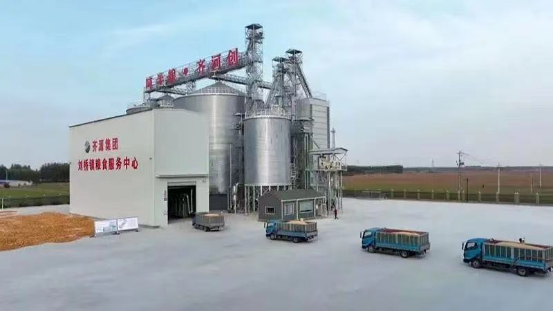I. Project Overview
Qihe County in Shandong Province is a major grain-producing county, known as the Granary of the Yellow River since its grain production surpassing 1.1 million tons annually for 15 consecutive years. To reduce post-harvest losses, Qihe County has pioneered the comprehensive promotion of Post-Harvest Grain Service Centers, achieving full coverage of drying and storage facilities in towns and townships, a first among major grain-producing counties nationwide. This initiative has led to the sustainable development of post-harvest grain services, known as the "Qihe Model".
II. Approaches
1) Scientific Layout of Post-Harvest Service Centers:
Qihe County invested 500 million yuan to construct 16 Post-Harvest Service Centers in 15 townships across the county. Over 110 grain procurement points were established, with farmers able to reach drying points within 5 km and selling points within 3 km. The construction included 33 continuous drying towers and 38 intelligent constant-temperature grain warehouses, with a daily drying capacity of 11,000 tons and a storage capacity of 190,000 tons, achieving full coverage in towns and townships.

2) Strengthening Financial Support and Collaborations:
The county integrated 37 million yuan to support project construction and a credit guarantee mechanism for grain purchase loans was established, facilitating financing of up to 140 million yuan for market-based grain procurement, ensuring companies have the funds to purchase grain.
An innovative cooperative model involving Post-Harvest Service Centers + United Societies + Cooperatives + Farmers was implemented to build an integrated agricultural industrial system from grain supply, cultivation, harvesting, storage, processing, to sales.
3) Digital Information System for Grain Storage:
An investment of 7.5 million yuan was made to establish a grain drying and storage command center, setting up a cloud-based early warning mechanism for comprehensive information management.
The system monitors grain conditions, drying, security, and inventory through charts, videos, and geographical locations, enabling real-time supervision of measurement, loading and unloading, drying, and storage.
III. Project Benefits
1) Promoting Grain Conservation and Food Security:
Since the project's inception, over 10,000 tons of grain have been dried, and over 40,000 tons stored, reducing grain losses by more than 1,600 tons.
This initiative has changed the traditional agricultural production's dependence on weather, shifting from relying on the weather to ensuring harvests regardless of droughts or floods.
2) Convenient Services Enhancing Farmers' Income:
The service centers, located near fields, have created a 3 km grain-selling radius, reducing losses in intermediary steps and increasing farmers' income by more than 100 yuan per mu through a 5% reduction in losses.
The unified procurement, drying, storage, and sale of grain not only improve grain quality and safety but also liberate rural labor, boosting farmers' incomes.
Source from:
National Food and Strategic Reserves Administration
Category
Innovative Post-Harvest Grain Service Model in Qihe County, Shandong Province
Contributor
Innovative Post-Harvest Grain Service Model in Qihe County, Shandong Province
Country
Case Study

